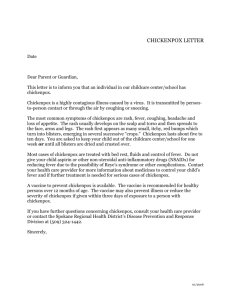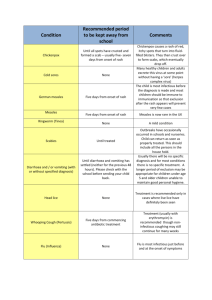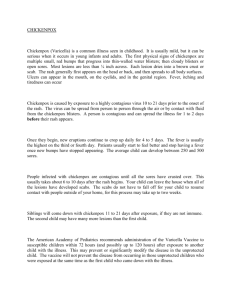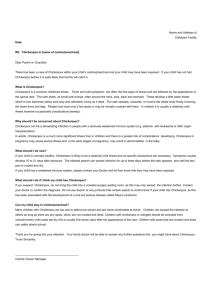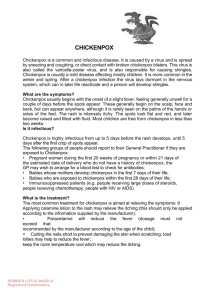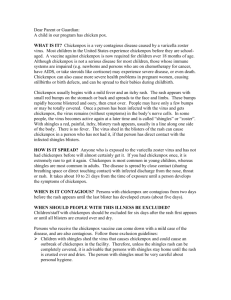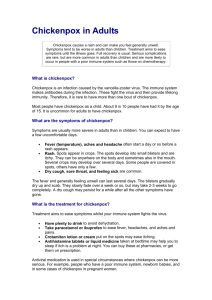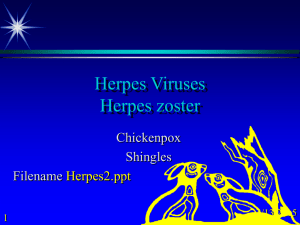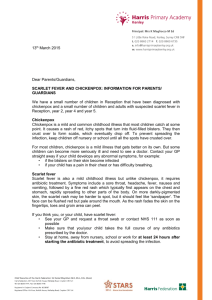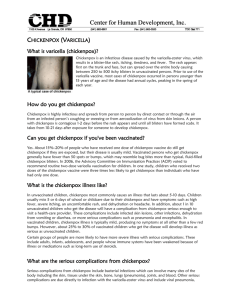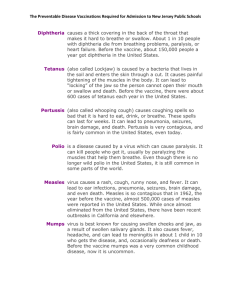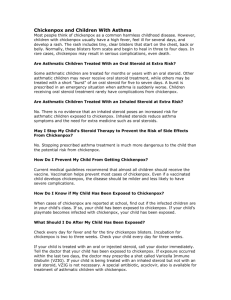Chicken Pox - Garden International School
advertisement
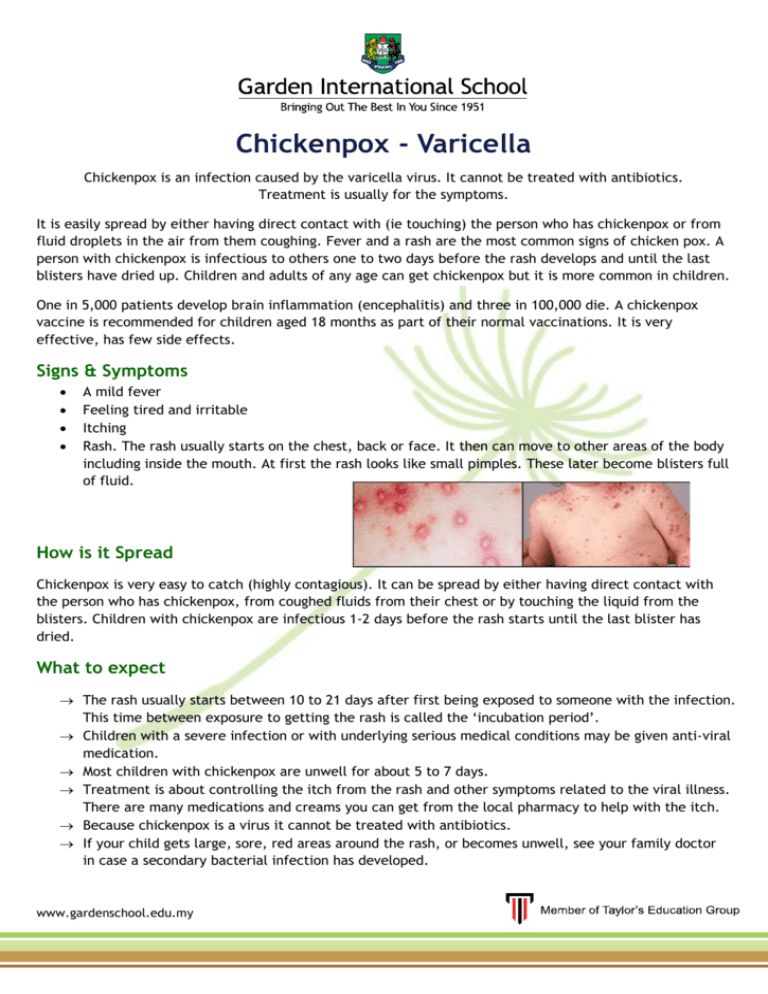
Chickenpox - Varicella Chickenpox is an infection caused by the varicella virus. It cannot be treated with antibiotics. Treatment is usually for the symptoms. It is easily spread by either having direct contact with (ie touching) the person who has chickenpox or from fluid droplets in the air from them coughing. Fever and a rash are the most common signs of chicken pox. A person with chickenpox is infectious to others one to two days before the rash develops and until the last blisters have dried up. Children and adults of any age can get chickenpox but it is more common in children. One in 5,000 patients develop brain inflammation (encephalitis) and three in 100,000 die. A chickenpox vaccine is recommended for children aged 18 months as part of their normal vaccinations. It is very effective, has few side effects. Signs & Symptoms A mild fever Feeling tired and irritable Itching Rash. The rash usually starts on the chest, back or face. It then can move to other areas of the body including inside the mouth. At first the rash looks like small pimples. These later become blisters full of fluid. How is it Spread Chickenpox is very easy to catch (highly contagious). It can be spread by either having direct contact with the person who has chickenpox, from coughed fluids from their chest or by touching the liquid from the blisters. Children with chickenpox are infectious 1-2 days before the rash starts until the last blister has dried. What to expect The rash usually starts between 10 to 21 days after first being exposed to someone with the infection. This time between exposure to getting the rash is called the ‘incubation period’. Children with a severe infection or with underlying serious medical conditions may be given anti-viral medication. Most children with chickenpox are unwell for about 5 to 7 days. Treatment is about controlling the itch from the rash and other symptoms related to the viral illness. There are many medications and creams you can get from the local pharmacy to help with the itch. Because chickenpox is a virus it cannot be treated with antibiotics. If your child gets large, sore, red areas around the rash, or becomes unwell, see your family doctor in case a secondary bacterial infection has developed. www.gardenschool.edu.my At home care It can be difficult to make sure children drink enough when they are unwell. Give sips of drinks and icy pops, soup and other fluids often. This helps prevent dehydration and helps control the fever. Children with chickenpox can feel tired and irritable. Taking paracetamol can help, do not give aspirin. Children with chicken pox should not go to school or kinder until the last blister has dried. A dry blister scab is not infectious. Tell the school if your child gets chickenpox. There may be other children who need to be immunised or treated. Someone with chicken pox is infectious to others one to two days before the rash starts until the last blister has dried up. Some members of the family may need to stay away from the child during this infectious stage. This includes people who are on chemotherapy or long term oral steroids, newborn babies and pregnant women who have not had chickenpox before. Most people cannot get chicken pox again if they have already had it. Children with chicken pox can usually be cared for at home and do not need to see a doctor. If you are concerned, see your family doctor. Special considerations Anyone who is taking long term oral steroids and anyone who is immune compromised (on chemotherapy or after an organ transplant), pregnant women or newborns should see their doctor if they think they have been exposed to chicken pox, as they may need treatment to prevent chickenpox. People with skin problems like eczema may also need to speak to a health professional for advice on which creams they can use for the rash. Children with chickenpox should not be given aspirin. Key Points to Remember Chickenpox is very easy to catch. Antibiotics will not cure chickenpox. Treatment is usually for the symptoms, such as rash, not the infection. The rash usually starts between 10 to 21 days after first exposure to chickenpox. Chickenpox is infectious 1-2 days before the rash starts until the last blister has dried. Information courtesy of The Royal Children’s Hospital Melbourne http://www.rch.org.au/kidsinfo/fact_sheets/Chickenpox_Varicella/ www.gardenschool.edu.my
